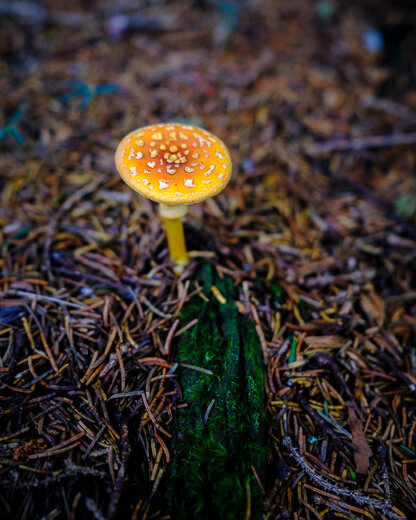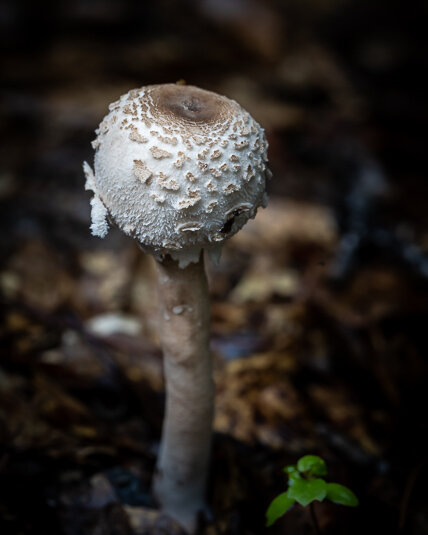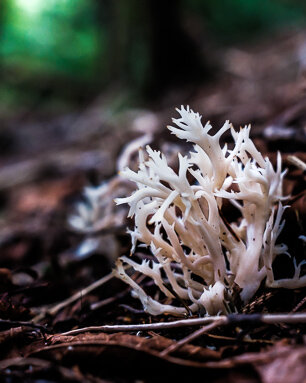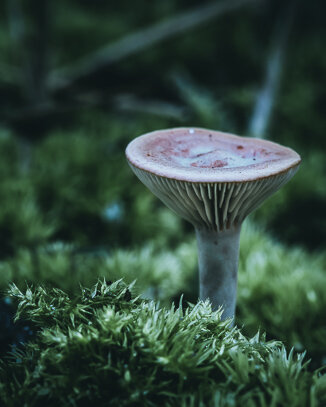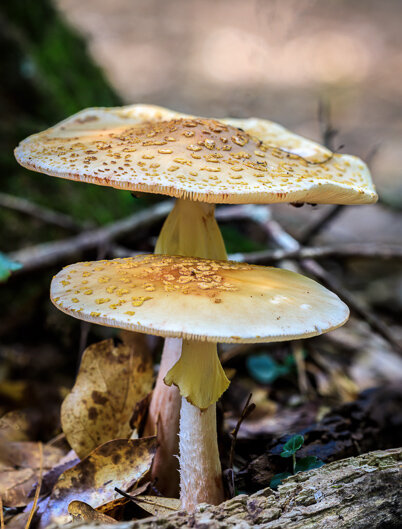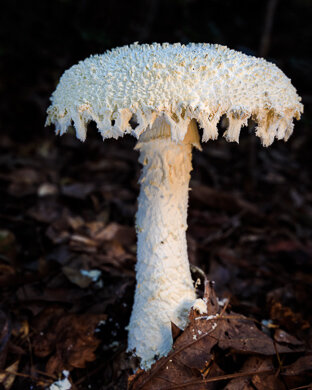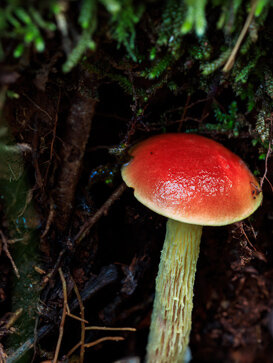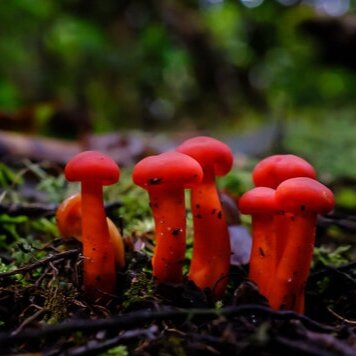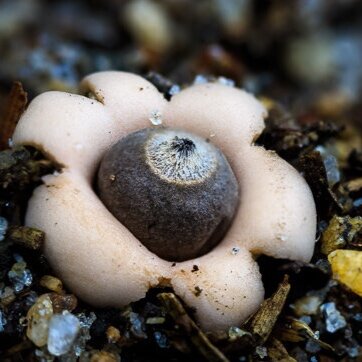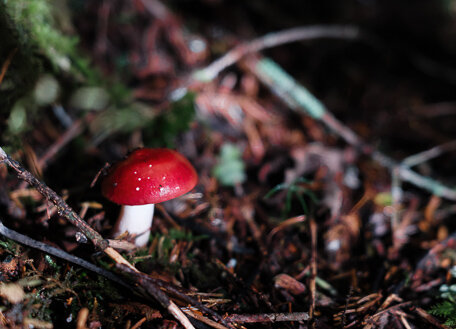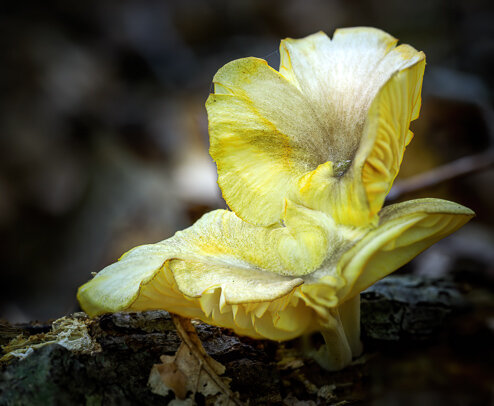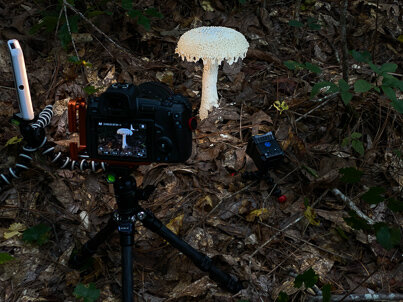The Wonderful World of Fungi
Before the Covid-19 Pandemic restricted travel, I never gave much thought to mushrooms except to make sure they weren’t in any food I ordered because I am not a fan of the taste. Although the pandemic has had and continues to have huge negative impacts across the world, I am trying to focus on the positives, however small. One such positive for me has been discovering the diverse ecosystem contained in the roughly 1.5 acres I call home. Back in the Spring, I was in awe at the variety of wildflowers I discovered in my yard and would venture out daily to see if anything new had popped up. Flowers are beautiful, but I get bored photographing them after awhile and by the summer, new ones had ceased to appear. This is when I discovered the wonderfully diverse and fascinating world of mushrooms and other fungi.
If you have even a small yard, chances are you will at least occasionally spot a mushroom or some type of fungi if you start looking. I’ve seen them grow in grass, leaf litter, pine needles, moss, sand, under trees, on trees, on leaves, compost, and even once on concrete. Mostly they seem to prefer damp, shady areas, but I have also seen them in full sun when it hasn’t rained for awhile. They come in all kinds of shapes, sizes, colors, and even textures. I have seen them in all four seasons, although they seem most abundant in the Southeast during Spring, Summer, and Fall.
In addition to cool colors, shapes and textures, fungi also have cool names. Some of my favorite are Destroying Angel, Golden Trumpet, Velvet-Foot Fairy Fan, The Blusher, Deadly Galerina, Witches’ Hat, Weeping Widow, Train Wrecker… I could go on, but you get the picture.
It turns out that finding and photographing mushrooms/fungi is the easy part. Identifying them can be both challenging and frustrating. Some are very distinctive and are easily recognizable like the Shaggy-Stalked Bolete . However, others are difficult for even trained mycologists (scientists who study fungi) to identify.
Hopefully I have peaked your interest in mushrooms and you will start looking for the fungi all around you too. I’ll wrap up with a few tips on both photographing and identifying these fascinating organisms and a bit of mycology humor. Why did the mushroom go to a party? Because he is a fungi.
Photographing Fungi
Bring some sort of light with you because a lot of fungi like it dark. I usually carry some combination of a flash, LED video light, or lumecubes. If you don’t have any of these, try a flash light or use a tripod.
Get low. Many fungi are very small and most grow low to the ground. Get down to their level when possible.
Don’t forget to try different angles. Many times what is found underneath the mushroom cap is more interesting and colorful than the top (see above photo of the pink gills of a meadow mushroom). Being able to see the details of different parts of the fungi will also help with identification.
Get close, but also try to include some of the surrounding environment in some of your images. This will also help identify the fungus because some only grow in certain habitats.
Take your time and experiment. Fungi are very patient subjects.
Identifying Fungi
Note the habitat (oak leaves, grass, etc) and time of year you see the fungi. If it is a mushroom, is it growing alone or in a group?
Take note of any details on the cap, i.e. patches, striations, changes in color from the center to the edge, is it slimy, leathery, waxy, powdery etc.
Look underneath the cap. Does the mushroom have gills or tube-like spores (like a sponge). If there are gills, are they attached to the stem or no?
What does the stem look like? What color is it, how thick/tall is it? Is it smooth or rough? Does it have a veil (skirt like piece hanging on it)? If you can dig up the mushroom, take note (and photos) of the base of the stem.
Smell the fungi. No, seriously. Some have distinctive odors. The Pyramidal Wart Cap (see photo above) has a very strong odor similar to bleach or chlorine.
Make a spore print by cutting the cap off of the stem and putting the cap (gill or spore side down) on a sheet of white paper. Wait several to 24 hours, lift the cap and see what color the area of the paper that was under the cap is. It is not unusual for the spore print to be different in color to the underside of the mushroom.
Consult multiple sources. In addition to the internet, I have two field guides that I will link to below.
Field Guides I Use
A Field Guide to Mushrooms of the Carolinas by Alan E. Bessette, Arleen R. Bessette &, Michael W. Hopping
Mushrooms of the Southeast by Todd F. Elliott & Steven L. Stephenson




